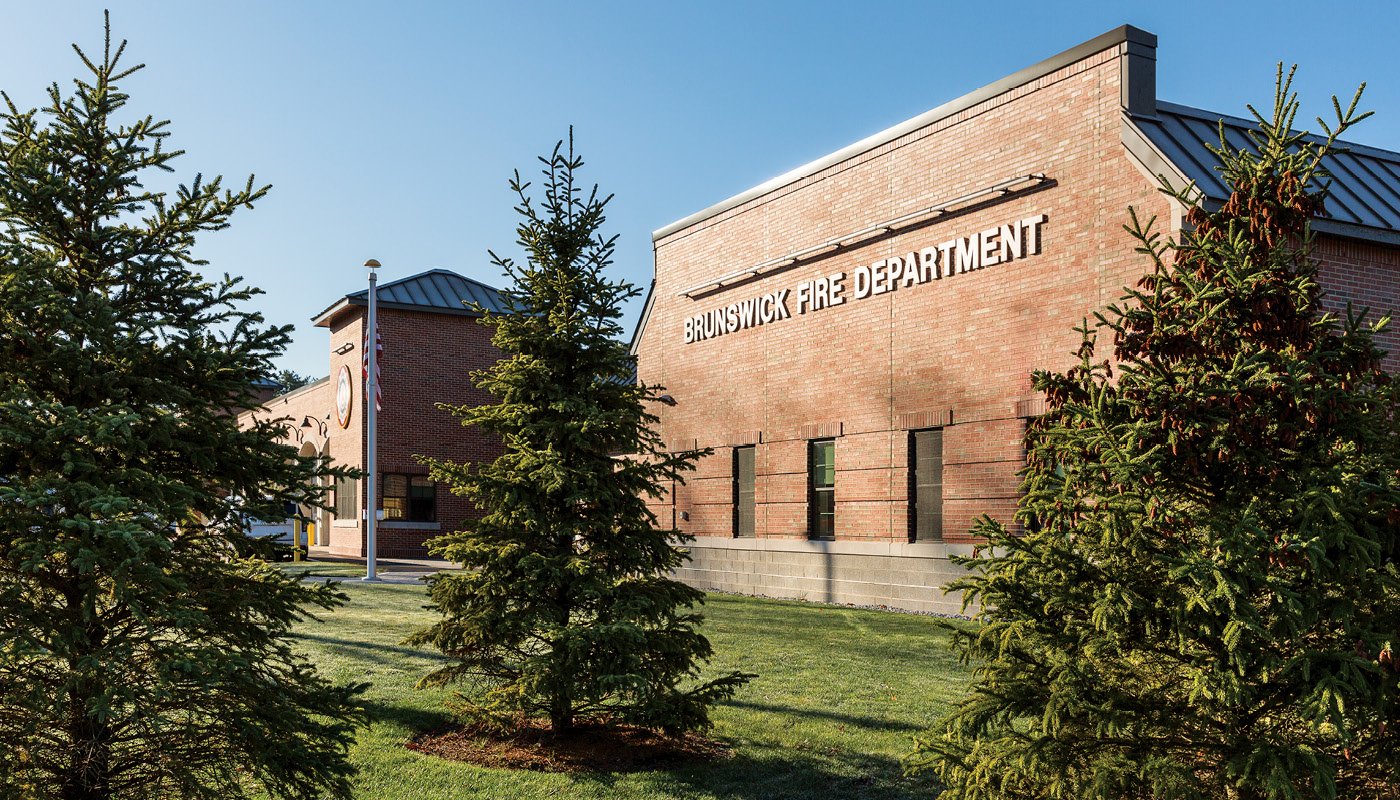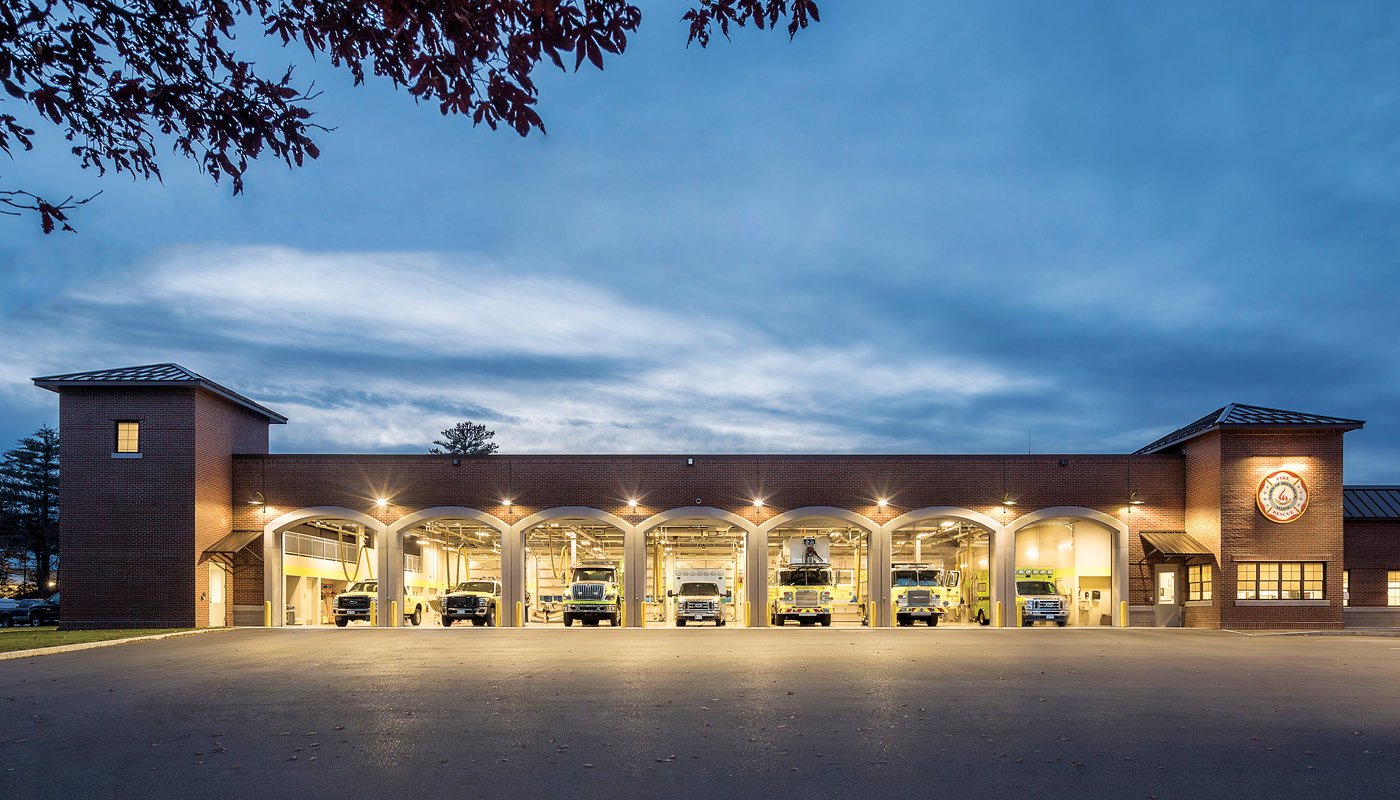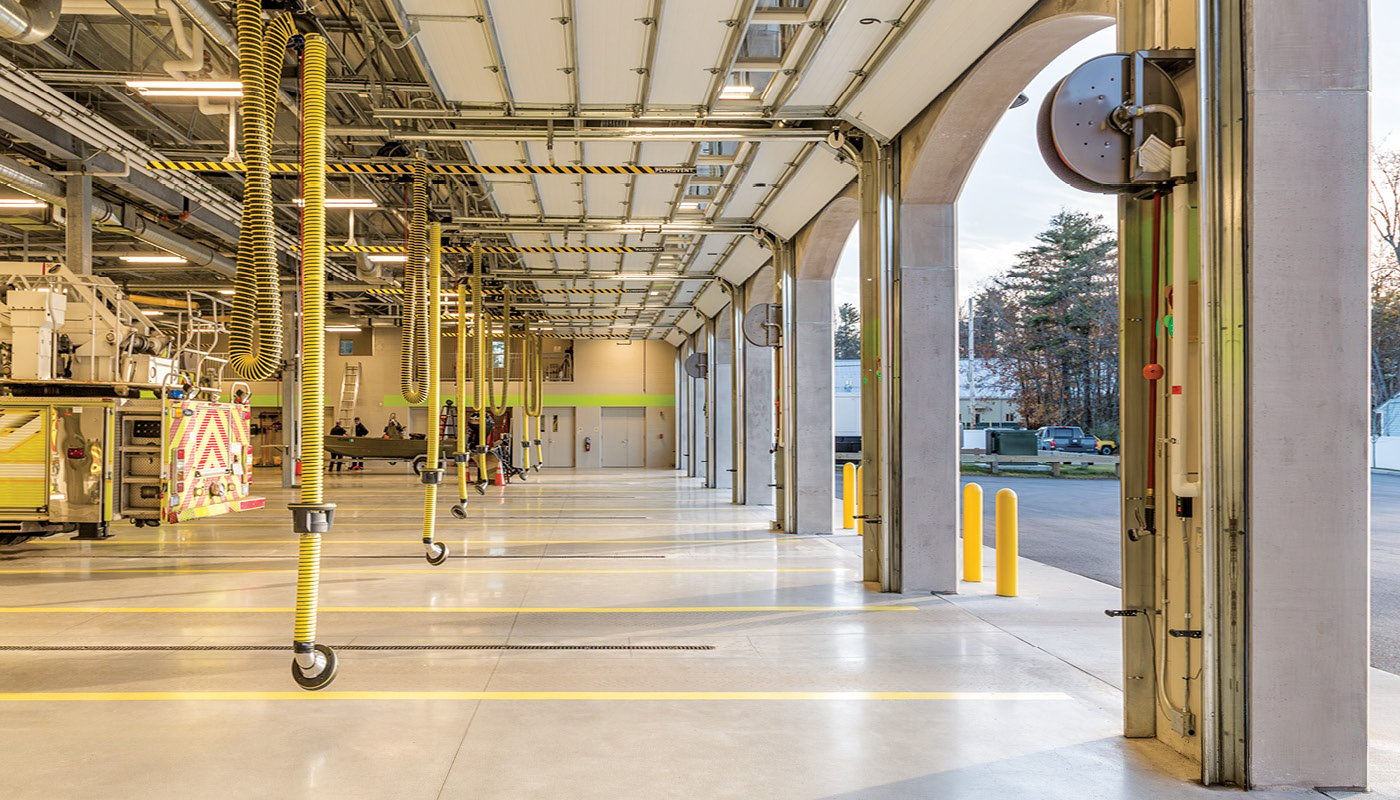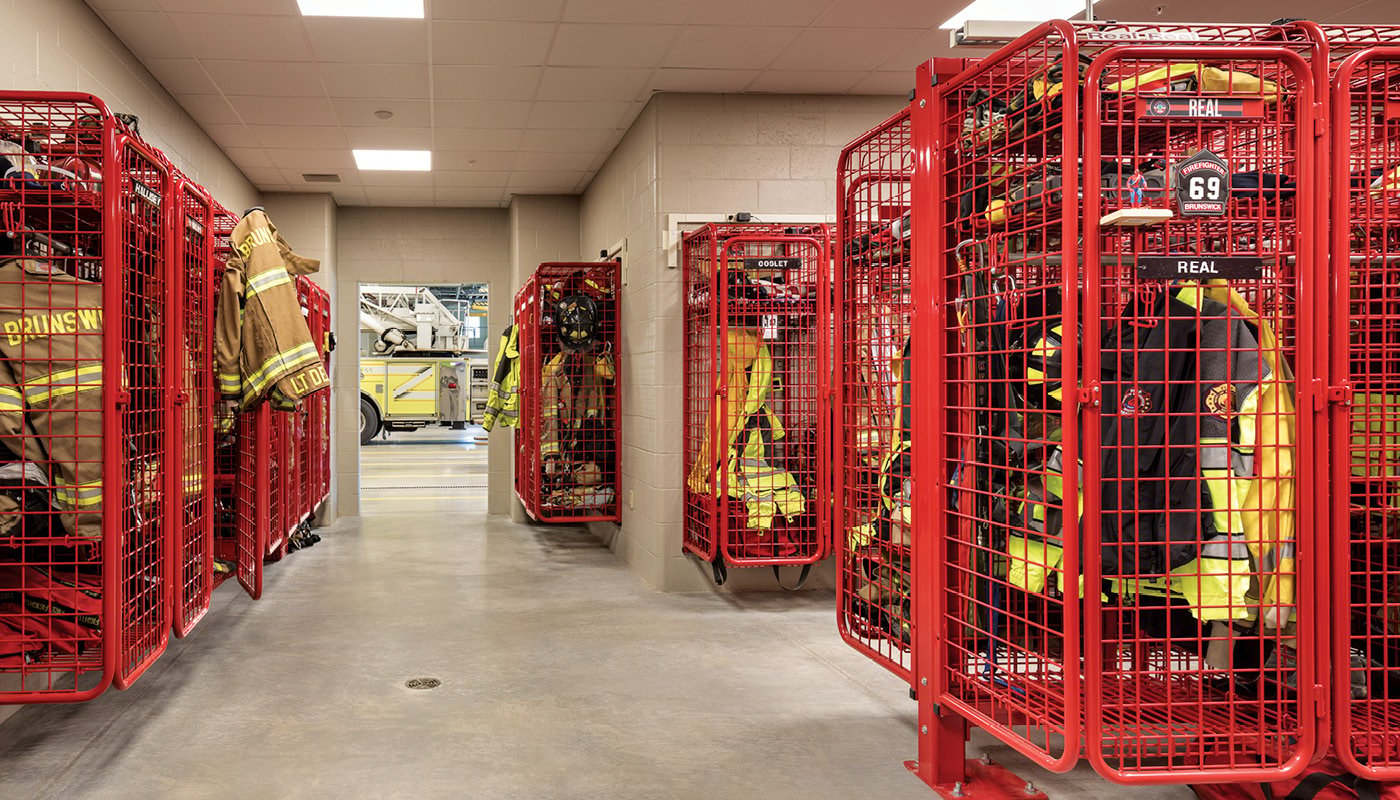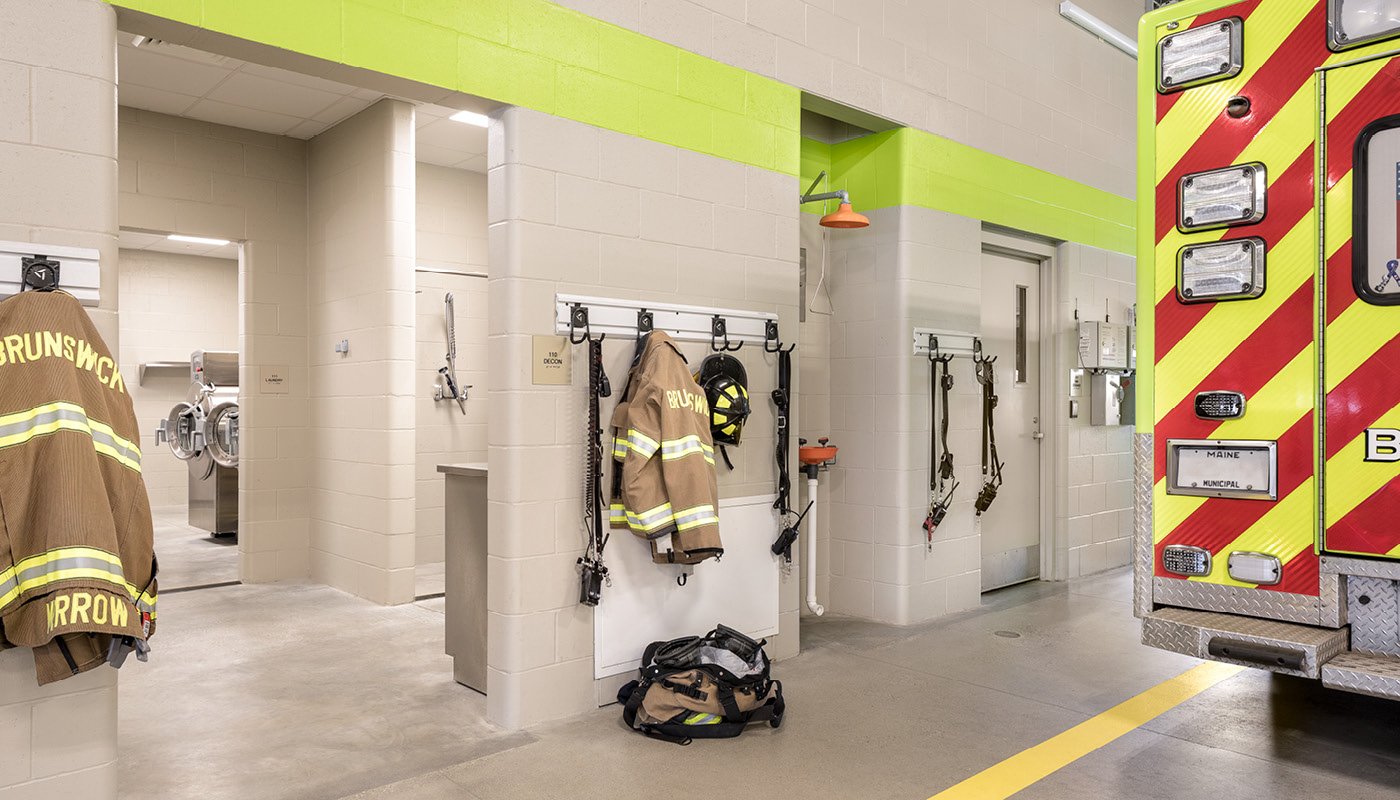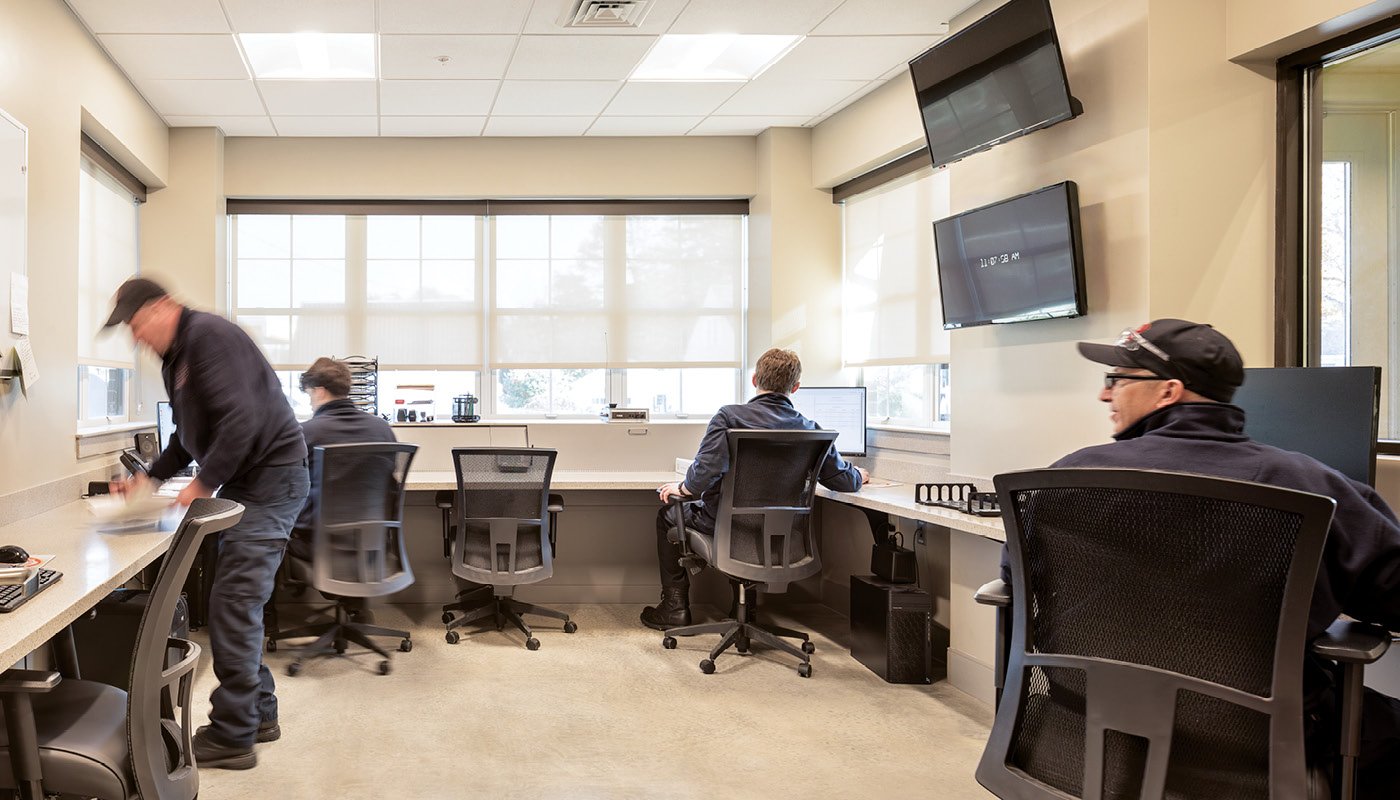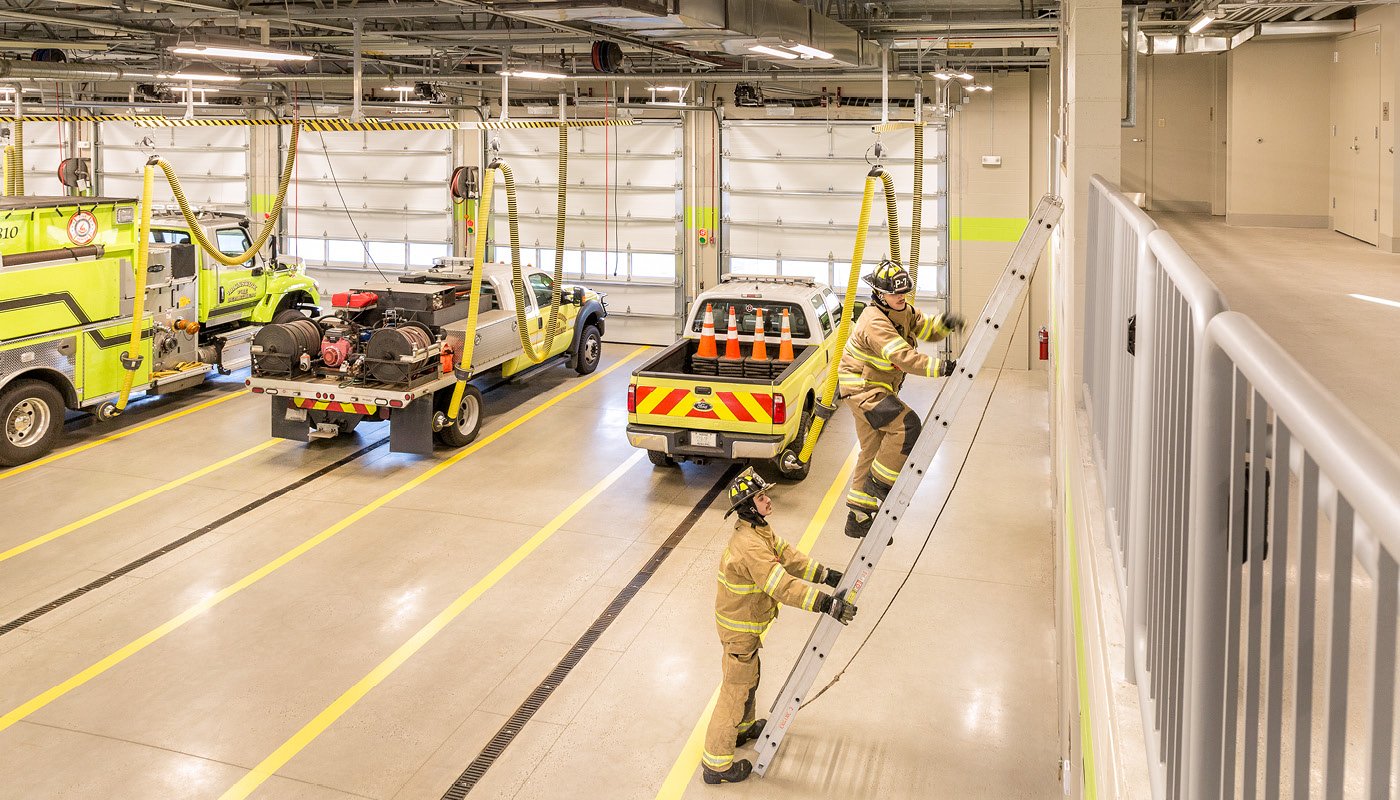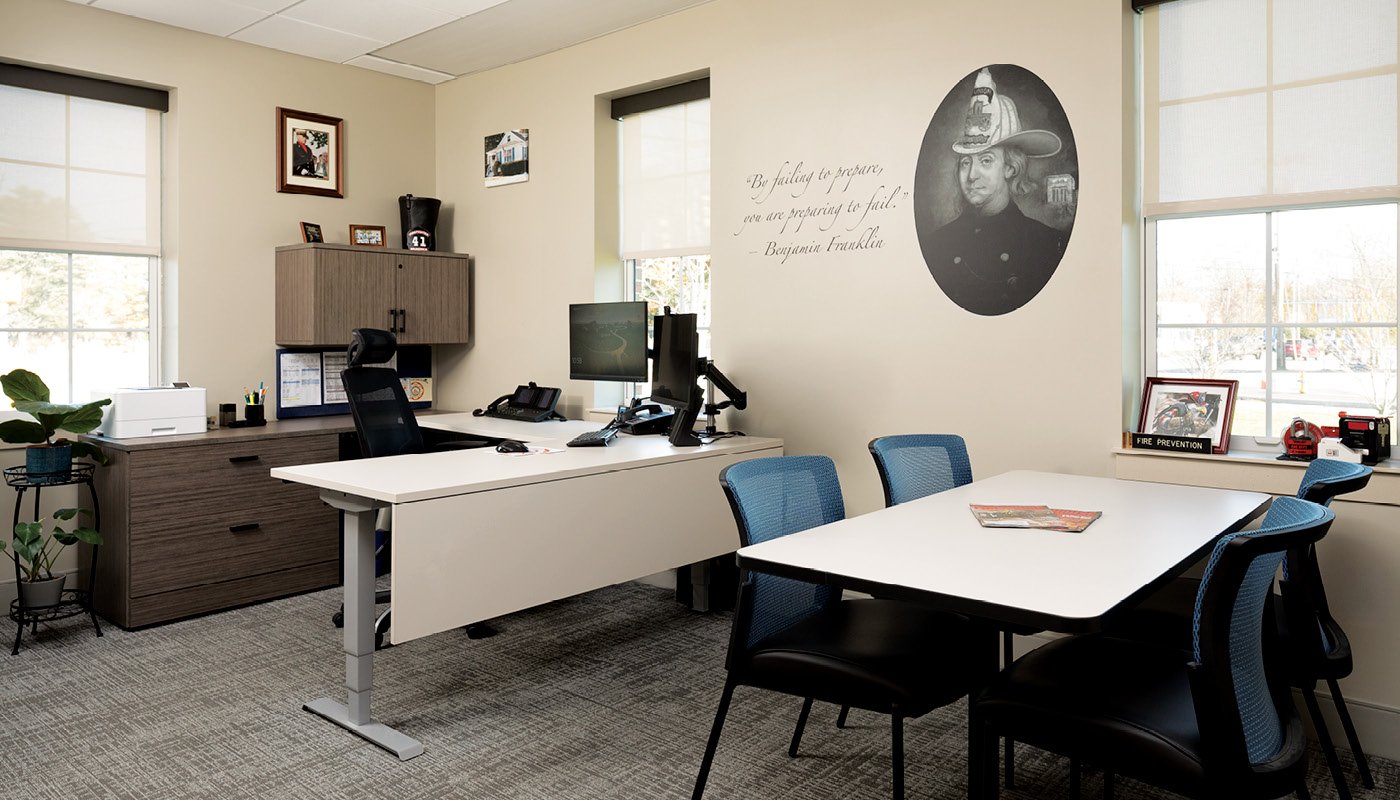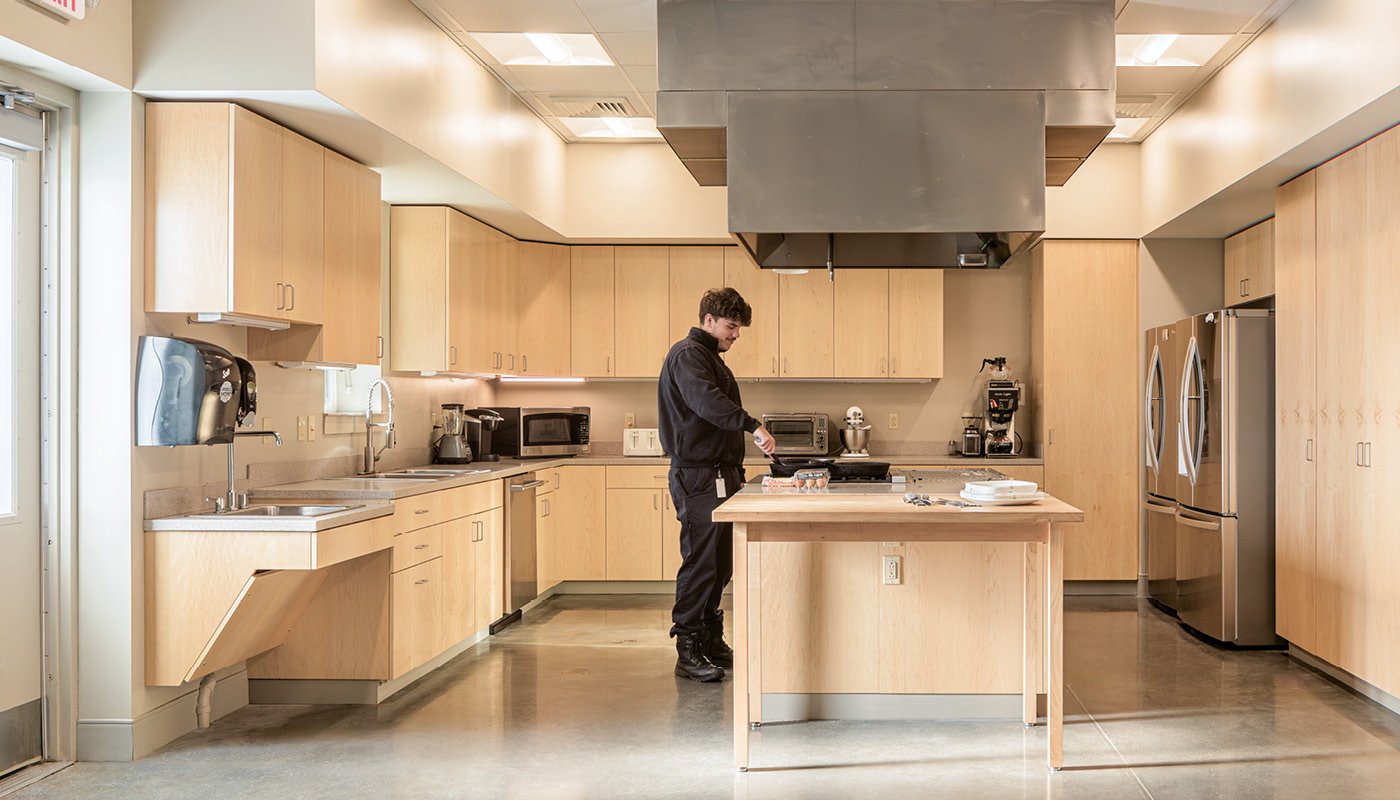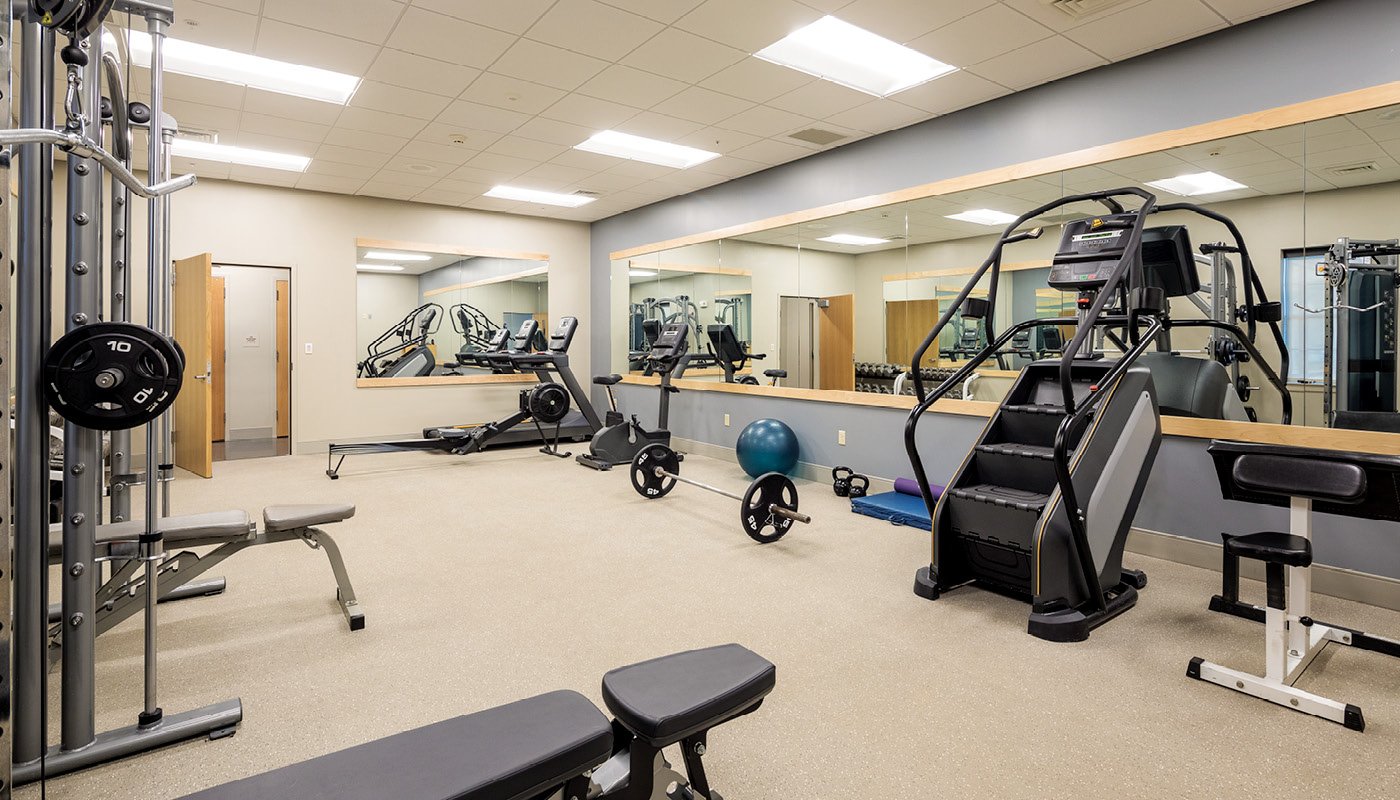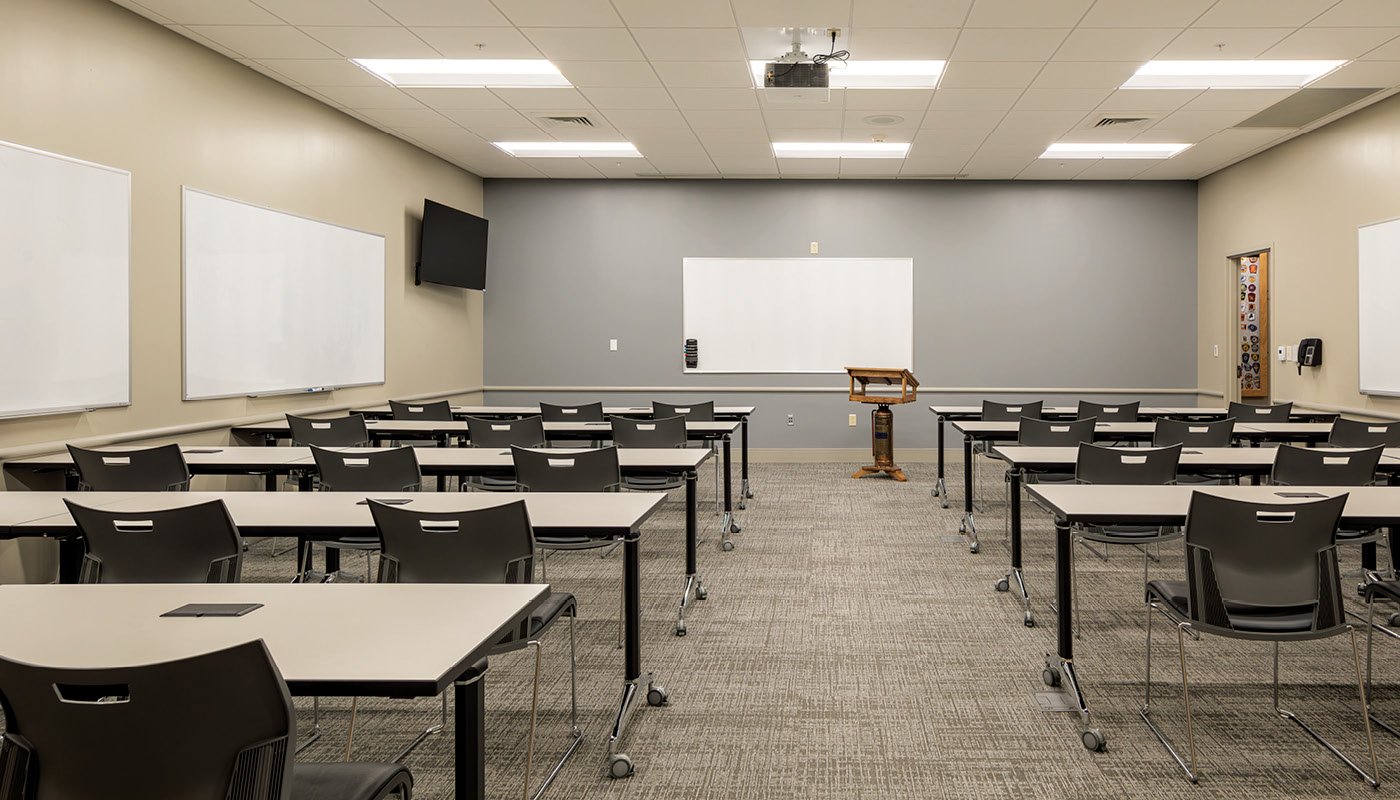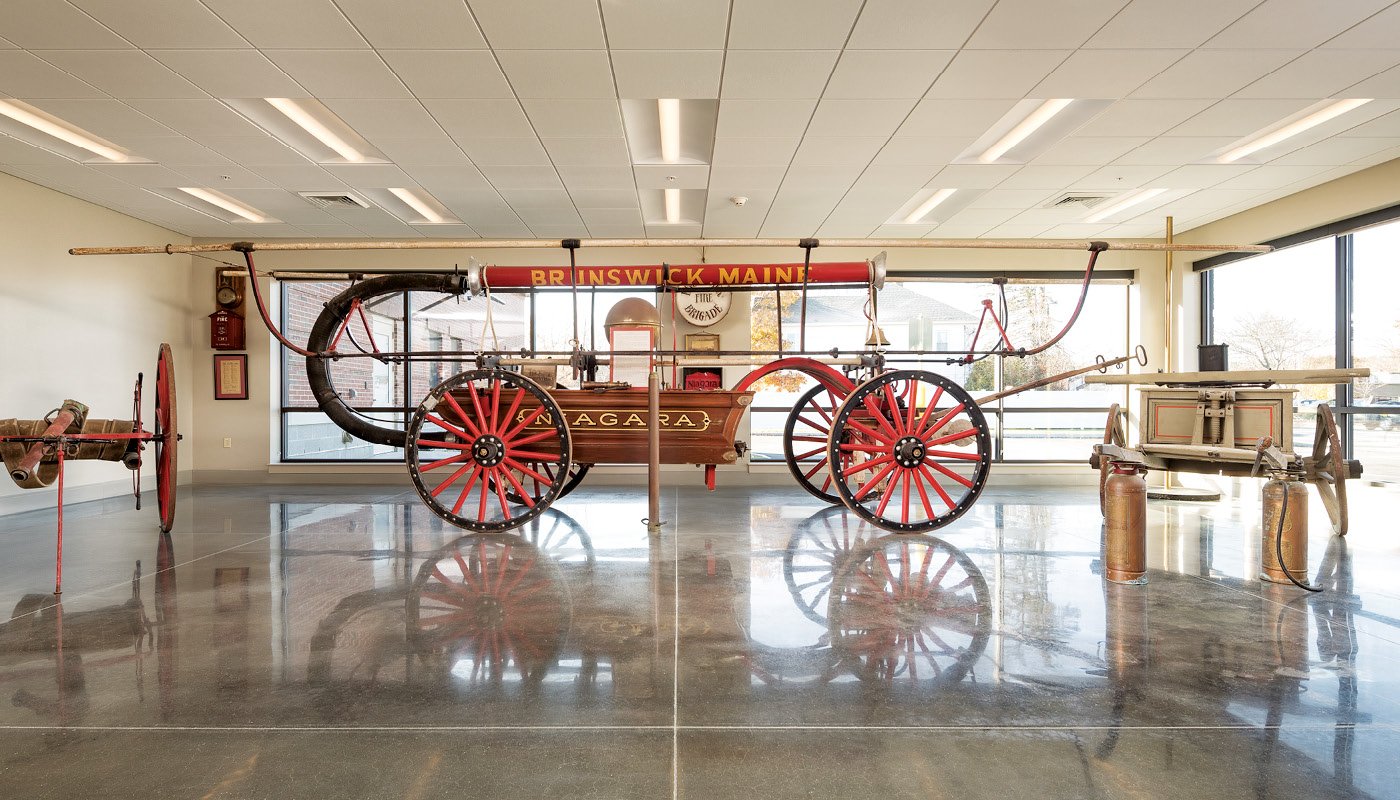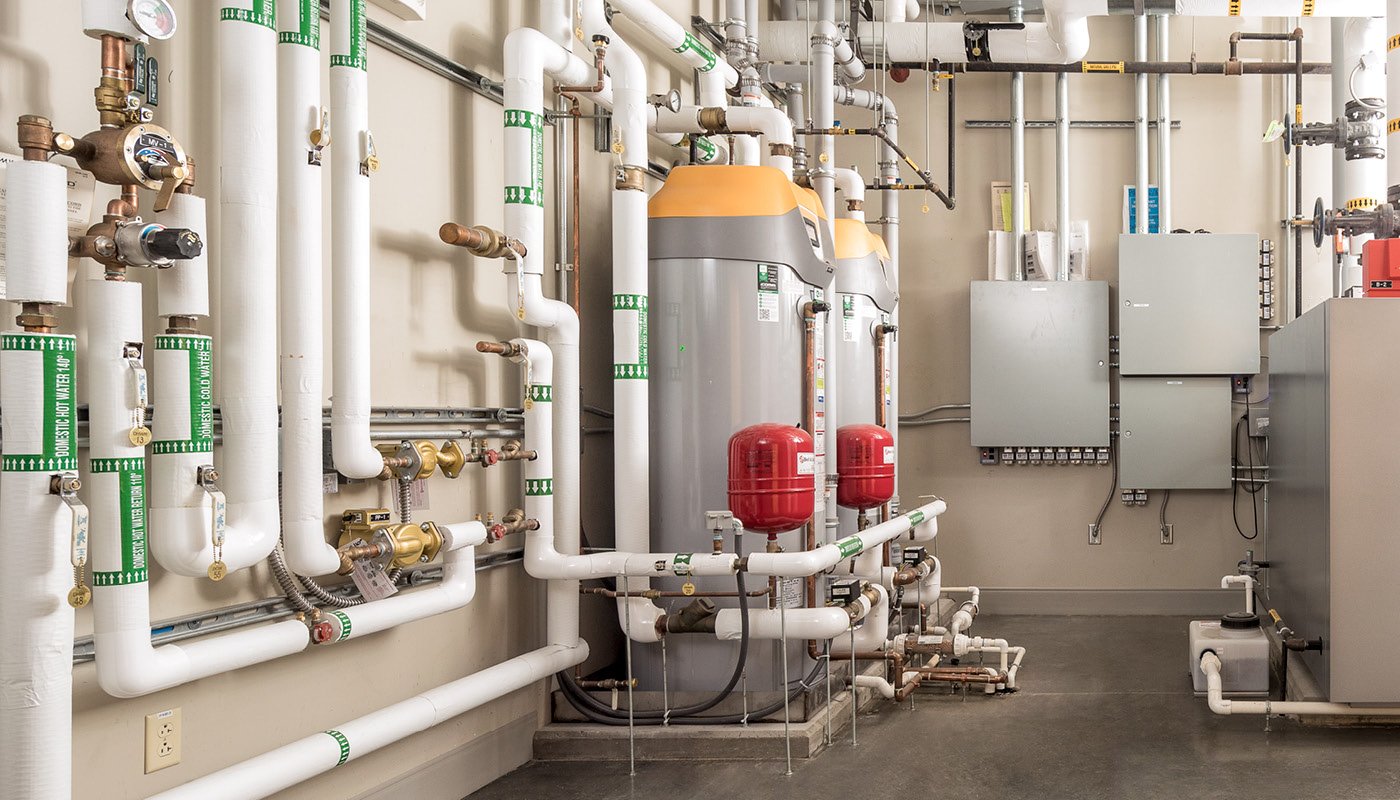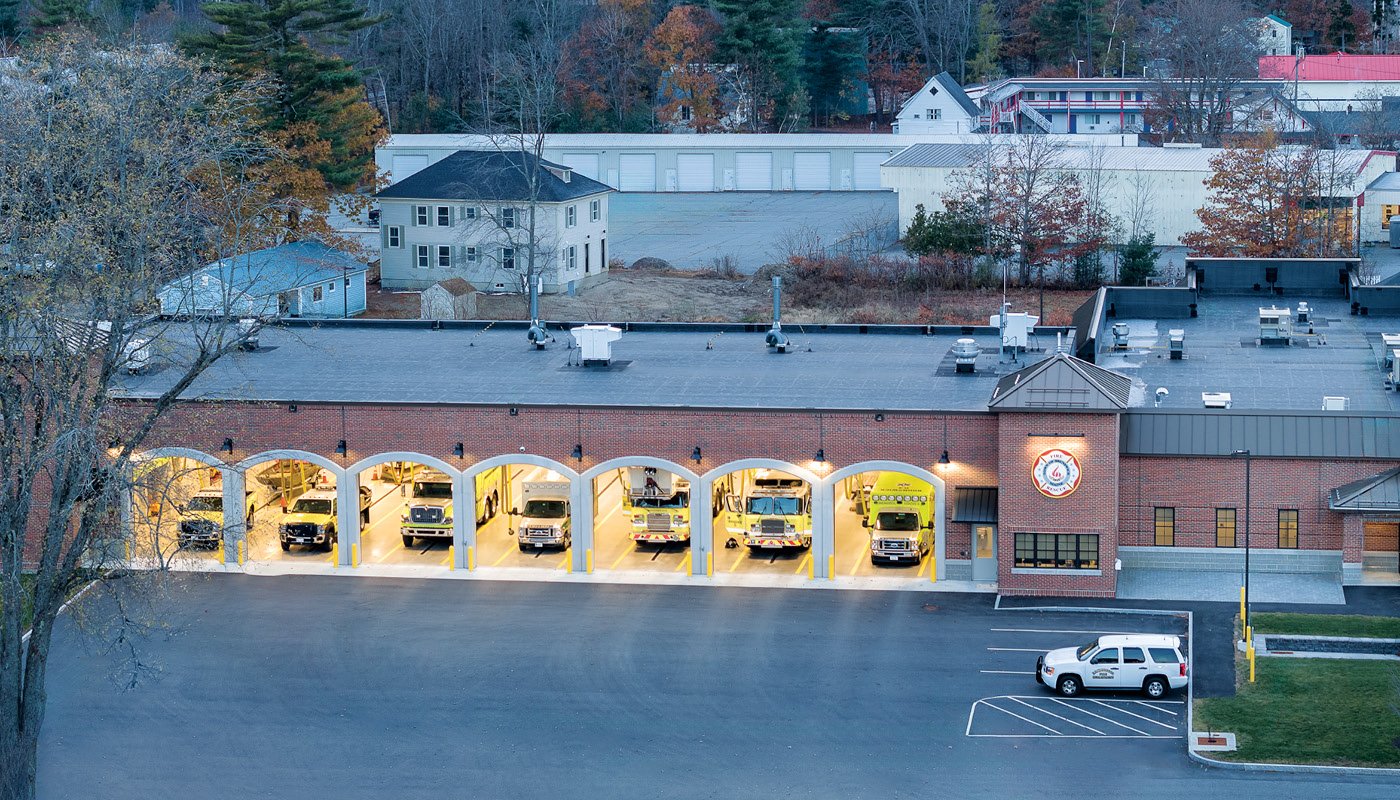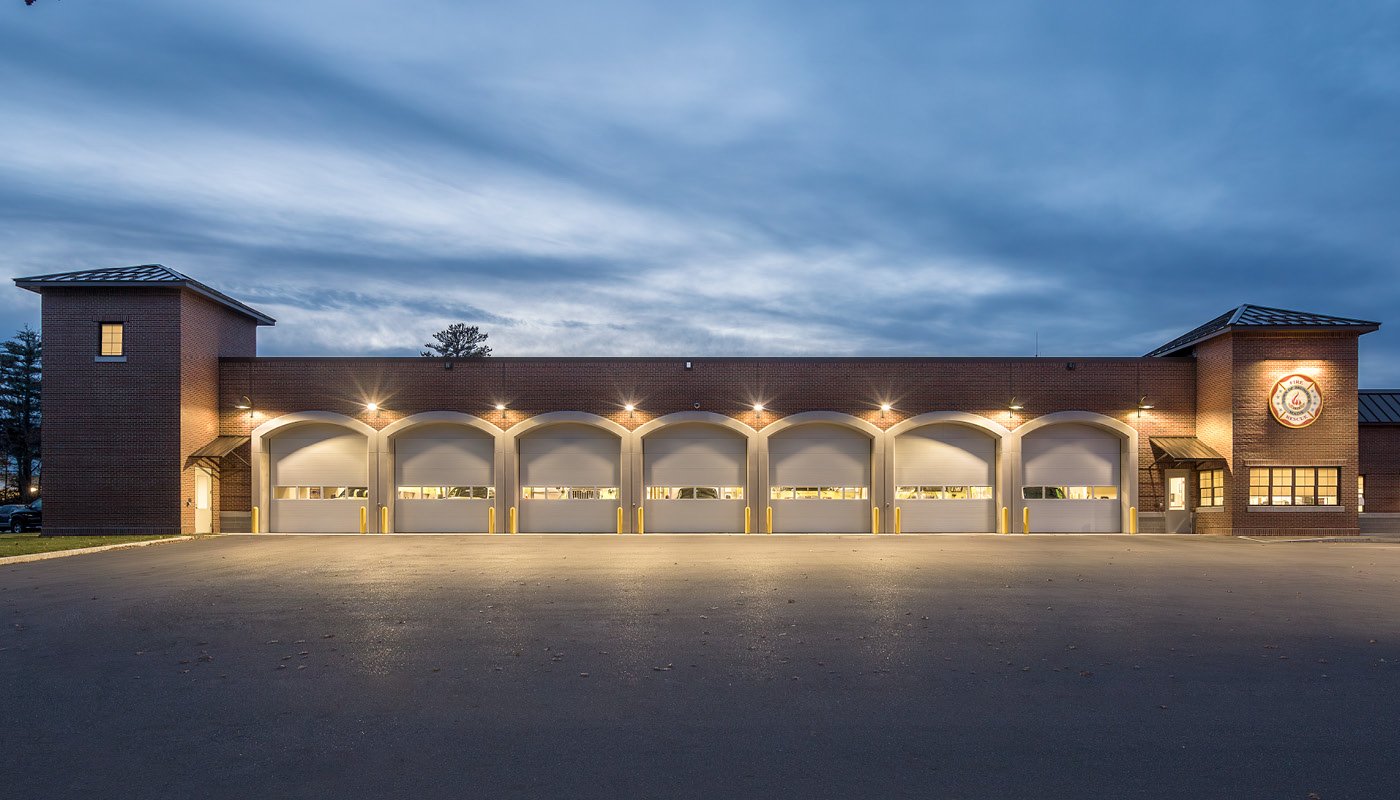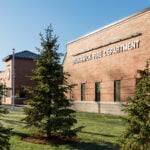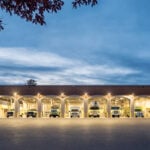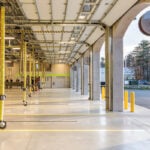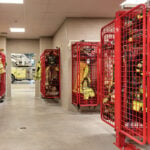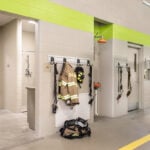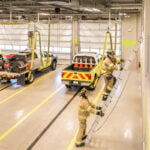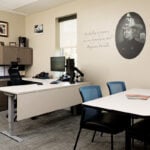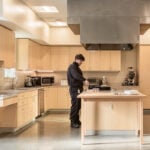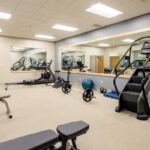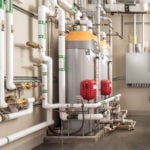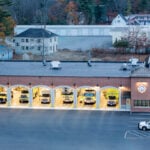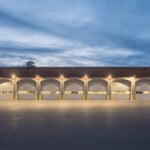Over 40 years in the making, Brunswick Fire Department’s new Central Station is one of the most efficient, firefighter friendly facilities in the state of Maine. This one-story, 28,000 SF station provides seven drive-through apparatus bays along with effective working and living spaces for Brunswick’s 40-member fire and EMS team. The $9.3M station was designed to maximize public safety, while also protecting firefighter health and safety through firematic programming, rigorous hot zone/cold zone separation, and accessible, gender-neutral spaces.
Like many legacy firehouses, Brunswick’s former central station was built when horse-drawn equipment was still in use and was unable to accommodate the largest modern engines. The new drive-through apparatus bay is sized and configured for the safe movement, storage, cleaning, and maintenance of today’s vehicles. It features a tailpipe exhaust system, dedicated decontamination areas, and strategic spaces for lockers, turnout gear, equipment, and storage.
Outside, the 2.4-acre site design supports the safe entry and egress of emergency vehicles, as well as ample, separated parking areas for staff and visitors. Fire and rescue personnel must respond to emergency situations at a moment’s notice, requiring professionals who are physically prepared and well-rested. To support this, the new station includes a fitness room, with bunk rooms located on the quiet side of the building. The apparatus bay’s 1,793 SF mezzanine provides rescue training opportunities to help emergency responders keep their skills sharp. Other key personnel spaces include a well-lit kitchen with adjacent day room, and gender-neutral bathrooms, showers, lockers, and laundry facilities.
The station’s user-friendly administrative wing includes offices, a large training/meeting room with kitchenette, conference room, radio room, and abundant spaces for storage, maintenance support, data, and mechanical systems. Brunswick’s Central Station also includes a museum for historic apparatus and memorabilia, visible to passers-by and accessed by a secure public entrance.

